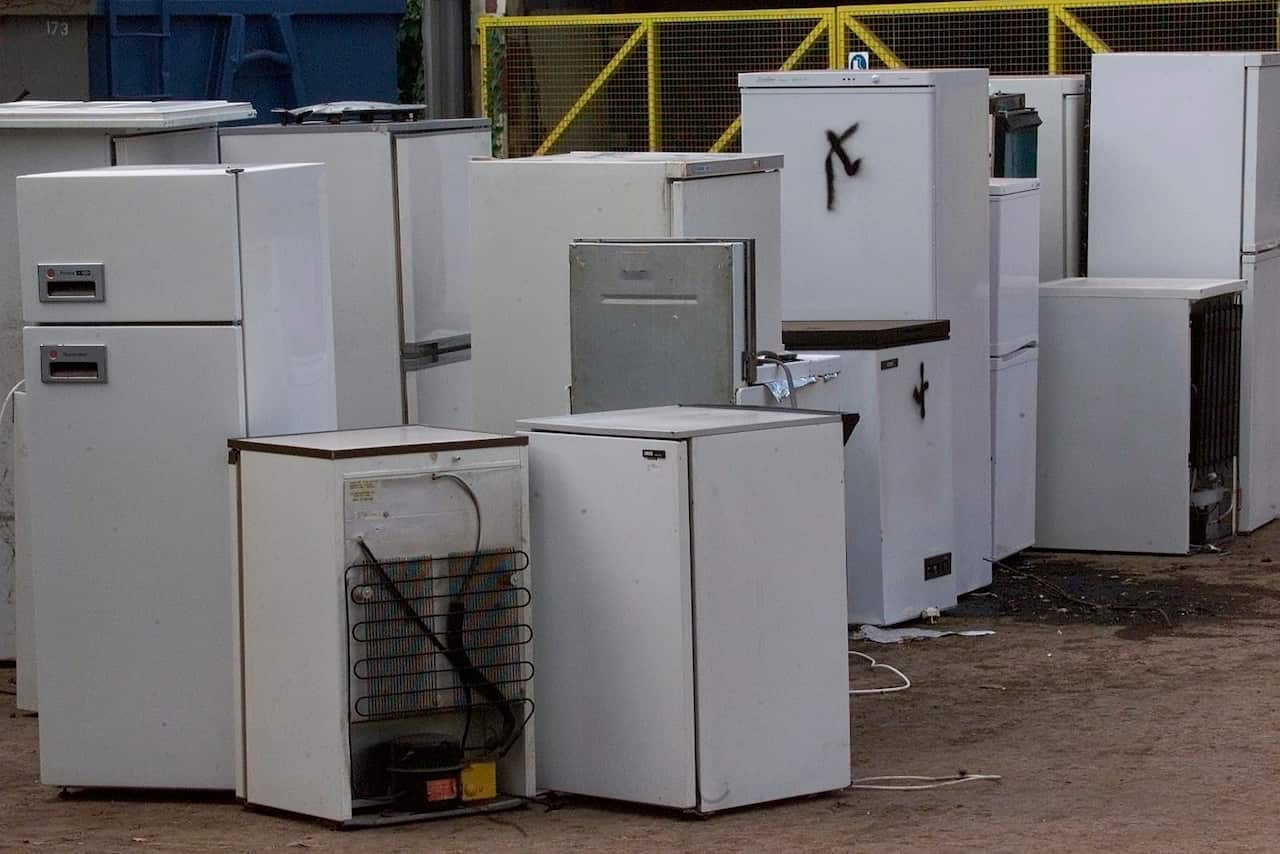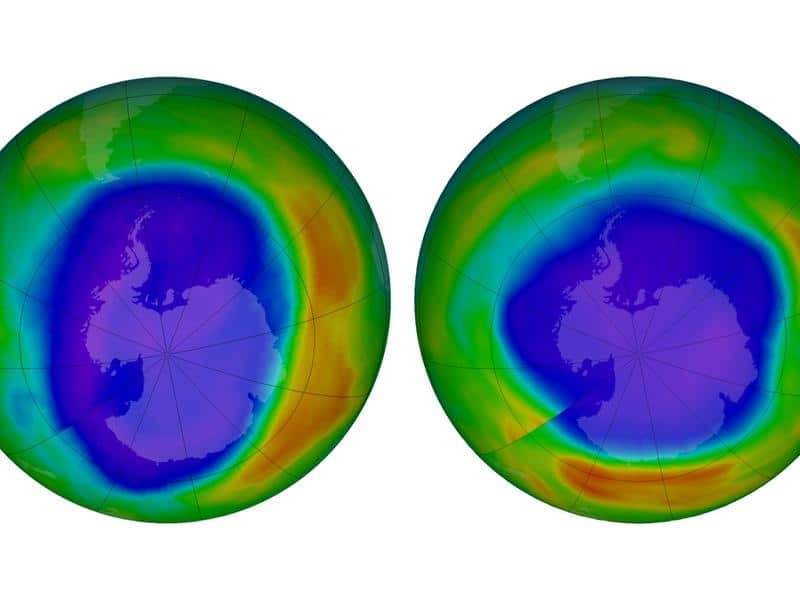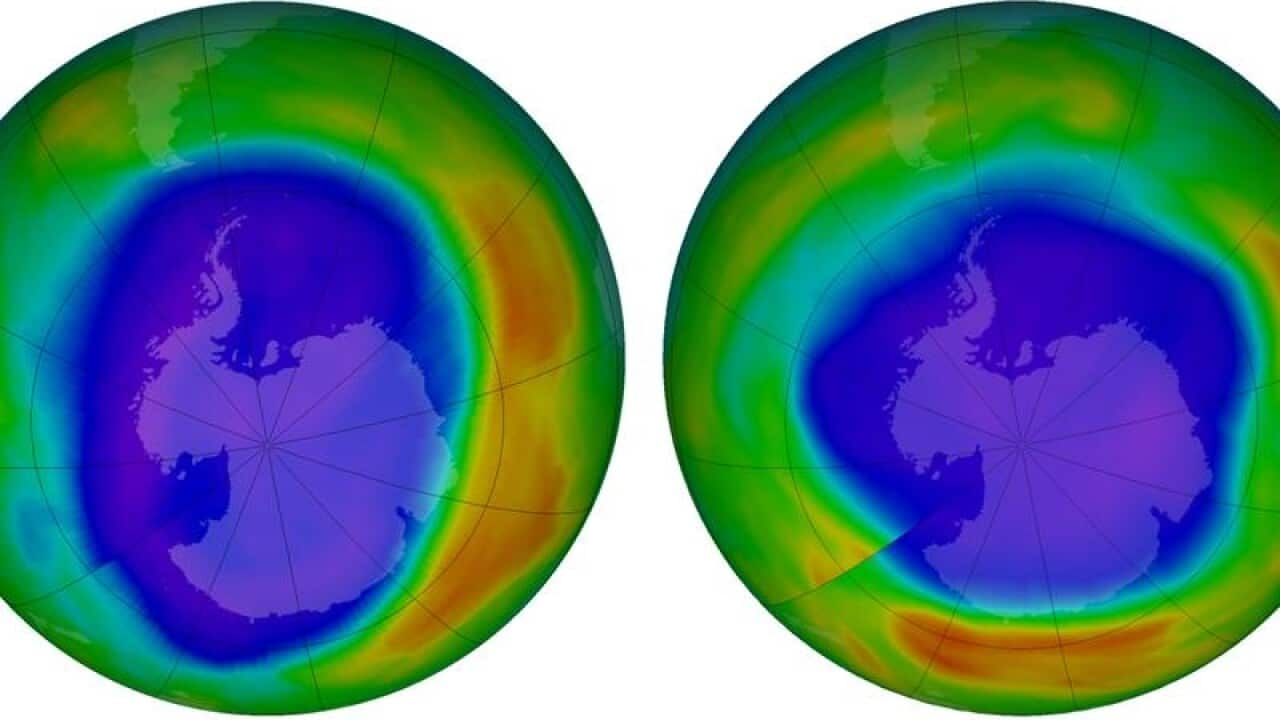Since 2013, annual emissions from northeastern China of the banned chemical CFC-11 have increased by about 7,000 tonnes, they reported in the peer-reviewed journal Nature.
"CFCs are the main culprit in depletion of the stratospheric ozone layer, which protects us from the Sun's ultraviolet radiation," said lead author Matt Rigby, an atmospheric chemist at the University of Bristol.
Chlorofluorocarbon-11 was widely used in the 1970s and 1980s as a refrigerant and to make foam insulation.

Tough European Union environment rules make it illegal to discard fridges containing CFCs. Source: AP
The 1987 Montreal Protocol banned CFCs and other industrial aerosols that chemically dissolve protective ozone 10 to 40 kilometres above Earth's surface, especially over Antarctica and Australia.
Following the ban's entry into force, global concentrations of CFC-11 declined steadily until about 2012.
But from 2013 to 2017.
Because the chemical does not occur in nature, the change could only have been produced by new emissions.
Evidence pointed to East Asia, but could not nail down the exact origin.
"Our monitoring stations were set up in remote locations far from potential sources," explained co-author Ron Prinn, a professor at MIT.
Reports last year from the Environmental Investigation Agency fingered Chinese foam factories in the coastal province of Shandong and the inland province of Hebei, which surrounds Beijing.
Suspicions were strengthened when authorities subsequently shut down some of these facilities without explanation.
To probe further, an international team of atmospheric scientists gathered additional data from monitoring stations in Japan and Taiwan.
"Our measurements showed spikes in pollution when air arrived from industrialised areas" in China, said another lead author, Sunyoung Park from Kyungpook National University.
Rogue factories
The team also ran computer simulations that confirmed the origin of the CFC-11 molecules.
"We did not find evidence of increased emissions from Japan, the Korean peninsula or any other country," added Luke Western, a post-doctoral researcher at the University of Bristol.
The findings also have implications for the fight against climate change.
"Perhaps even more serious is the role of CFCs as long-lived greenhouse gases," Joanna Haigh, a professor at Imperial College London, noted last year in reaction to the initial report.
Two decades ago, CFCs - more potent by far as greenhouse gases than carbon dioxide or methane - accounted for around 10 per cent of human-induced global warming.
Pouring more CFC-11 into the air could also prevent ozone from returning to normal levels, scientists warn.

NASA combination images showing areas of low ozone above Antarctica in 2000, left, and 2018, right. (AAP) Source: AAP
"If emissions do not decline, it will delay the recovery of the Antarctic ozone hole, possibly for decades," said Paul Fraser, an honorary fellow at the CSIRO Climate Science Centre in Australia.
CFC-11 persists in the atmosphere for about half a century and still contributes about a quarter of all chlorine - the chemical that triggers the breakdown of ozone - reaching the stratosphere.
At its most depleted, around the turn of the 21st century, the ozone layer had declined by about five per cent.
Today, the "hole in the ozone" over the South Pole is showing clear signs of recovery.
But a study last year found that the ozone layer is unexpectedly declining in the lower stratosphere over the planet's populated tropical and mid-latitude regions.
Up to now, CFCs and other molecules have mainly eroded ozone in the upper stratosphere, and over the poles.
That study identified two possible culprits: industrial chemicals not covered by the Montreal Protocol called "very short-lived substances" (VSLSs), and climate change.


